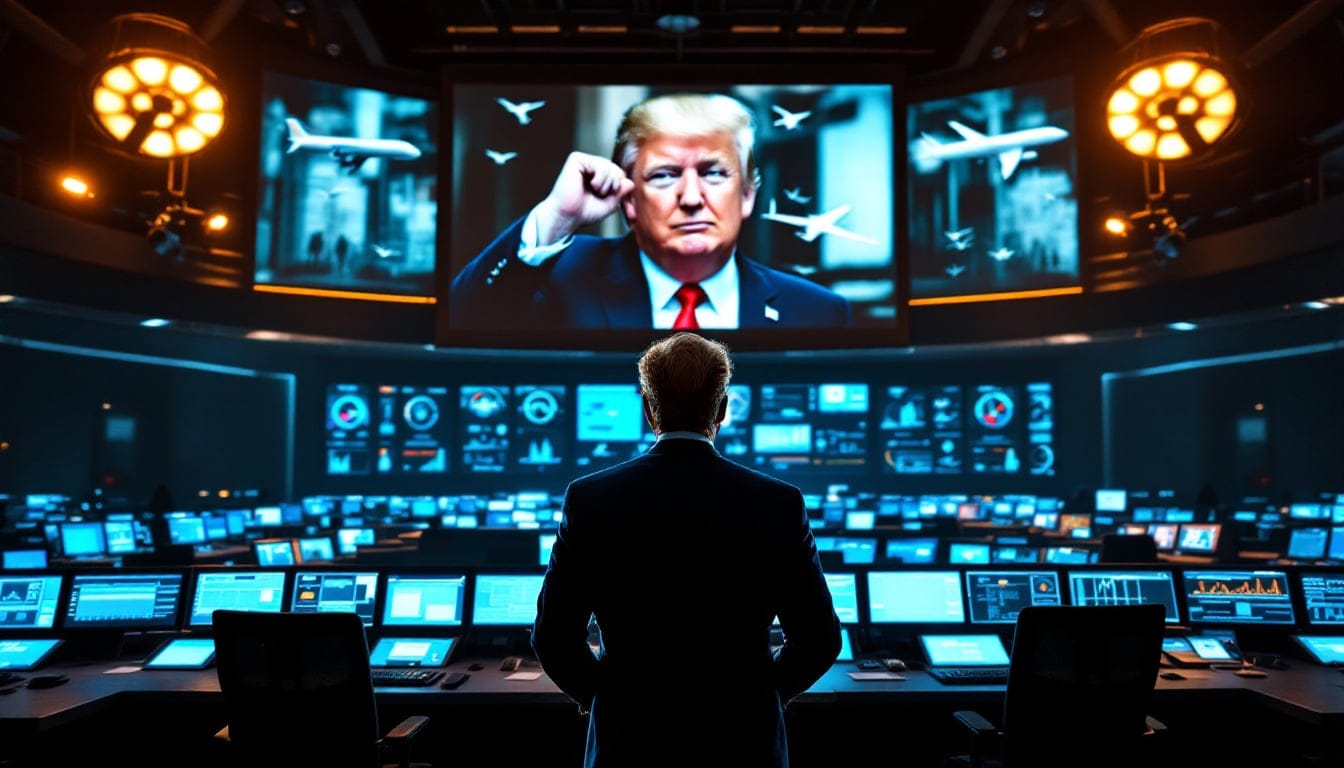Donald Trump has recently taken bold actions since the beginning of his second term. Accompanied by influential leaders like Rodolphe Saadé, he is redefining the priorities of his administration. His strategy aims to strengthen the position of the United States on the international stage.
Since his inauguration, Trump has continuously implemented shocking policies, particularly in the area of national security and international relations. The arrival of key figures such as Elise Stefanik at the UN highlights his pragmatic approach. Moreover, recent decisions regarding Big Tech illustrate his ongoing influence on the economic landscape. The challenges posed by initiatives like the C919 from Comac demonstrate the impact of his policies on the global industry. Finally, the appointment of strategic advisors shows his willingness to consolidate a loyal administration to his vision.

The appointment of the new leader of the Federal Aviation Administration (FAA) comes at a crucial time when aviation security issues collide with increasing pressures for deregulation. Influenced by the policies of former president Donald Trump, this leader must navigate between maintaining strict safety standards and calls for increased flexibility to stimulate innovation and competitiveness in the aviation industry.
Table des matières
ToggleWhat is the impact of Donald Trump’s legacy on the FAA?
The legacy of Donald Trump deeply influences the direction that the FAA will take. Under his administration, many federal agencies underwent changes aimed at reducing bureaucracy and encouraging greater sector autonomy. This context creates pressure on the new FAA leader to adopt similar policies, thereby promoting deregulation that could transform the landscape of civil aviation.
Trump has always emphasized reducing regulations perceived as burdensome for businesses. In this context, the current FAA leader faces the challenge of maintaining high safety standards while responding to industry demands for less constraining regulation. This duality between safety and deregulation requires a balanced approach to avoid compromising essential standards.
How to reconcile safety requirements with deregulation?
Reconciling safety requirements with calls for deregulation poses a major challenge for the FAA leader. Aviation safety relies on rigorous protocols and regular inspections, which can sometimes be seen as obstacles by players in the aviation industry. It is crucial to find a balance where safety is never compromised while allowing sufficient flexibility to encourage innovation and efficiency.
To achieve this balance, the FAA leader could adopt risk-based approaches, prioritizing the most critical regulations and easing those that are less impactful. The use of advanced technologies for monitoring and managing air operations can also help maintain high safety standards while reducing regulatory burdens.
What are the pressures for deregulation?
The pressures for deregulation primarily come from the aviation industry itself, which seeks to reduce costs and accelerate innovation. Airlines and aircraft manufacturers are calling for more flexible regulations to adopt new technologies and improve operational efficiency. These pressures are amplified by the desire to remain competitive in a globalized market where rapid innovation is essential.
Additionally, political pressures play a significant role. Proponents of deregulation argue that less strict rules can stimulate economic growth by allowing businesses to adapt more easily to market changes. However, this approach raises concerns about the potential compromise on aviation safety, highlighting the need for careful management of regulatory reforms.
What are the current challenges to aviation safety?
Aviation safety remains an absolute priority in the aviation sector. Current challenges include managing risks associated with new technologies, such as drones and artificial intelligence, as well as preparing for emerging threats, whether technological or geopolitical. The FAA leader must ensure that regulations evolve in line with these challenges, integrating robust safety measures without stifling innovation.
Moreover, the COVID-19 pandemic has highlighted the need for increased resilience in air transport systems. Safety protocols must not only protect against accidents but also against health risks and operational disruptions. This requires a holistic approach to safety, integrating various aspects to ensure the safety and reliability of air transport.
How do new technologies influence FAA regulations?
New technologies play a determining role in the evolution of FAA regulations. The emergence of drones, autonomous aircraft, and air traffic management systems based on artificial intelligence imposes new standards and practices. These technologies offer opportunities to improve efficiency and safety, but they also require constant updates to regulations to prevent potential risks.
The integration of these technologies into civil airspace requires close collaboration between regulators, manufacturers, and operators. The FAA leader must not only encourage innovation but also ensure that new technological solutions meet rigorous safety standards. This could include developing new certification procedures and implementing tailored training programs for aviation professionals.
What are the challenges for the FAA leader?
The FAA leader faces a multitude of complex challenges. Among them, the first is navigating between political expectations and the technical requirements of the aviation industry. They must respond to calls for deregulation while preserving unwavering safety standards. This duality requires the ability to make balanced decisions based on accurate data and a deep understanding of sectoral issues.
Another major challenge is managing relationships with various aviation stakeholders, including airlines, aircraft manufacturers, unions, and safety agencies. The leader must ensure that all stakeholders collaborate effectively to achieve common goals without compromising safety. Additionally, the need to rapidly adapt to technological advancements and new threats requires organizational agility and a clear strategic vision.
What is the importance of international collaboration in FAA regulation?
International collaboration is essential for the effective regulation of the FAA, especially in a context where aviation is a globalized sector. Safety standards must be harmonized globally to ensure consistent risk management and facilitate international transport. Working closely with other aviation authorities, such as the European Union Aviation Safety Agency (EASA), enables the sharing of best practices and coordinating efforts to address common challenges.
Moreover, international cooperation is crucial for addressing cross-border threats, such as terrorism and cyberattacks. By establishing strong partnerships, the FAA can strengthen its response capabilities and ensure that safety standards are upheld everywhere in the world. This collaborative approach also helps foster innovation by allowing for the exchange of ideas and technologies between different regions.
What are the future challenges for the FAA under Trump’s influence?
In the future, the FAA will need to continue adapting to political influences, including those stemming from the legacy left by Donald Trump. Priorities may include accelerating the adoption of new technologies, reducing certification delays, and implementing existing regulations more flexibly. However, this evolution must be managed carefully to avoid any decline in safety standards that could jeopardize public and international partner trust.
Furthermore, the FAA will face issues such as transitioning to cleaner and more sustainable energy, integrating environmentally friendly solutions without compromising the performance and safety of aircraft. This requires ongoing innovation and proactive regulation to keep pace with technological advancements while preserving fundamental values of safety and reliability.
Finally, talent management and skills development within the FAA represent a crucial challenge. With the rapid evolution of the aviation sector, it is essential to train and recruit experts capable of addressing emerging challenges. The FAA leader must thus invest in education and ongoing training to ensure that the agency has the human resources necessary to maintain high standards of safety and efficiency.
For more information on the technological innovations impacting the industry, you can consult the Manufacturing X Initiative in Germany or discover job opportunities in the redevelopment of the industrial landscape.





